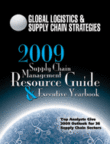
Visit Our Sponsors |
|
|
|
|
|
|
|
|
|
|
|
|
|
|
|
|
|
|
|
|
|
|
|
|
|
|
|
|
|
|
|
|
|
|
|
|
|
|

A lot of great work is still being done in so-called green supply chain management, and more companies are active in this area than 18 months ago. Nevertheless, the stories are starting to get repetitious. I attended numerous conferences last year, and all them had a session or speaker focused on green supply chain management (in some cases, I was the featured speaker, so count me among the guilty). The bulk of the case studies presented at these events can be summarized as follows: companies are recycling more; they're reducing the amount of packaging used in their products; they're eliminating "bad" materials from their products and packaging; they're building LEED-certified stores and distribution centers; they're optimizing their transportation operations; they're producing more energy-efficient products; they're measuring (well, estimating) their carbon footprint; and they're participating in programs such as SmartWay and the Carbon Disclosure Project.
As an analyst that gets paid to look ahead, to think about what comes next, I guess I'm ready for the next phase of innovation in this area. Here are a couple of case studies that I'm still waiting to hear:
• A company that redesigned and optimized its supply chain network using carbon minimization as a constraint or a key objective. At the moment, most companies are just measuring (estimating) their carbon footprint and comparing the footprint of one scenario versus another. But I have yet to come across a company that decided to incur higher supply chain network costs (however small) in exchange for a lower carbon footprint. It seems that green is good for business because only green initiatives that are good for business (or mandated by the government or Walmart) get done.
• A company that reduced the number of SKUs it produces or carries because these products were consuming resources disproportionate to their financial contribution. By "resources" I don't only mean materials and energy, but also all the time, labor and costs associated with designing, manufacturing and distributing a product. To put it more bluntly, there's a lot of crap being manufactured and sold out there that most people could live without.
The Outlook
There are a number of interesting questions related to green supply chain management in 2009. For example, how will the regulatory environment change in the U.S. (e.g., cap-and-trade?) under President Barack Obama and the Democratic Congress? Will companies invest more or less in green initiatives during the economic downturn? What happens to the call for change if oil remains relatively inexpensive? These types of questions will certainly generate a lot of worthy discussions and analysis in the months to come.
RELATED CONTENT
RELATED VIDEOS
Timely, incisive articles delivered directly to your inbox.






